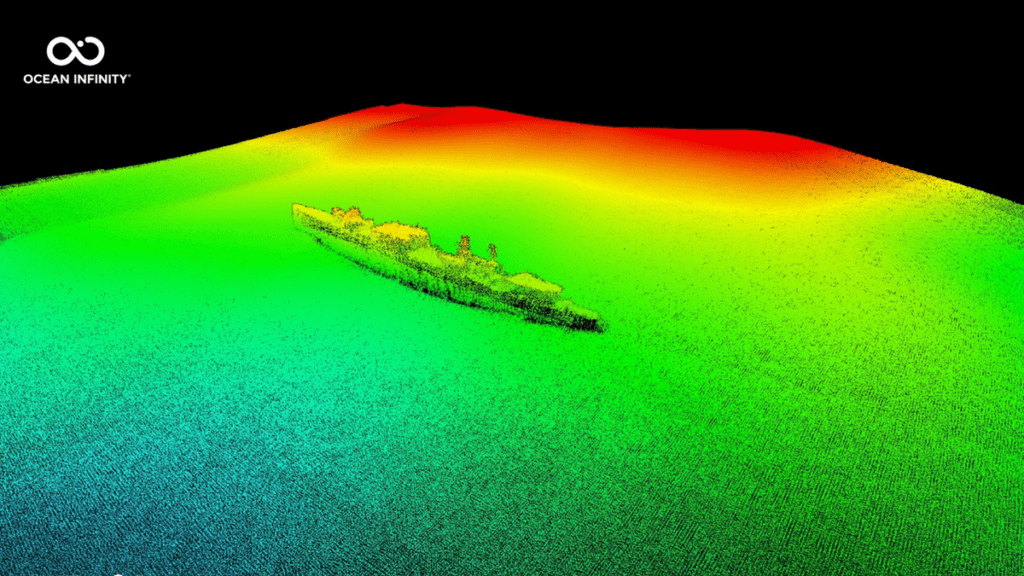‘Exceptional’ WW2 Ghost Ship Found At The Bottom Of The Sea After 78 Years

A ghost ship that has been missing since it was captured by the Japanese Navy during the Second World War has been located on the bed of the Pacific Ocean. The ship, which was called the U.S.S. Stewart, was unearthed after almost 80 years by a team of scientists that used a fleet of autonomous submarines to scan the sea floor.
I Need A Sporty Ride That Can Haul | WCSYB?
The U.S.S. Stewart was a patrol ship deployed by the U.S. Navy from early 1920 and was stationed in the Philippines during World War 2. However, the ship was scuttled and struck from the Navy’s roster in 1942.
After a year under water, the ship was spotted in service during WWII, but this time it was at the hands of the Japanese Navy, which had refloated the vessel. Modified for the needs of the Japanese, the ship renamed it Patrol Boat No. 102, reports the Maritime Executive.
Target practice. Photo: National Archives
In 1945, the ship returned to the U.S. Navy, but was given the rather undignified task of serving as target practice for aircraft. It was heavy firing from various machine guns and missiles that finally finished off the ship, which was now called DD-224 and sank to the bottom of the Pacific Ocean in 1946.
That’s where the story might have ended for the ship, had it not been for a team of scientists intent on scouring the seafloor with a fleet of autonomous submarines. Now, it’s been relocated after 78 years on the ocean floor, reports the New York Times.
A team of researchers from the Air Sea Heritage Foundation and Search deployed a fleet of autonomous submarines 70 miles off the coast of San Francisco. The craft scoured the sea floor, before finally capturing a glimpse of the sunken craft on sonar. As the Times explains:
The robots had spotted the wreck of the “Ghost Ship of the Pacific,” the only U.S. Navy destroyer captured by Japanese forces during World War II. Formerly known as either the U.S.S. Stewart, or DD-224, the ship was resting in what is now the Cordell Bank National Marine Sanctuary.
Three days later, another set of underwater robots captured images of the historic wreck. Though shrouded in decades of marine growth — and home to sponges and skittering crabs — the 314-foot-long destroyer is almost perfectly intact and upright on the seafloor.
“This level of preservation is exceptional for a vessel of its age and makes it potentially one of the best-preserved examples of a U.S. Navy ‘four-piper’ destroyer known to exist,” Maria Brown, superintendent of both the Cordell Bank and Greater Farallones national marine sanctuaries, said in a statement.
It was quite a challenge for the team to locate the wreck of the ship, despite the U.S. Navy being responsible for its demise. That’s because the Navy never took an exact record of where the ship went down after it was used for target practice.

This is what 78 years under the sea will do to you. Photo: Ocean Infinity
In order to track down its remains, researchers started by analyzing tug data from the ships that towed it out for target practice, this put it around the boundaries of the Cordell Bank National Marine Sanctuary. This was where the autonomous subs from a company called Ocean Infinity were deployed. Using an array of sonar and other sensors onboard, the flotilla tracked down the remnants of the ship, as the Times adds:
With NOAA’s permission, Ocean Infinity went to that spot. Mr. Sherrell noted that undersea, mapping a region of 37 square nautical miles — the search area for DD-224 — typically takes weeks. The Ocean Infinity drones spotted the ghost ship within hours.
“We covered it very quickly, and in high resolution,” Mr. Sherrell said.
The terabytes of data gathered by Ocean Infinity now constitute the best map of that portion of the Cordell Bank sanctuary. The data set also concludes the eight-decade story of a ship that always meant more than the steel now corroding in the deep.
Unmanned aquatic drones have changed the game in deep sea exploration in recent years, with the craft being linked to discoveries of ships like the U.S.S. Nevada and the Endurance, which sank during a 1915 expedition by Ernest Shackleton.

The ship was found after spending 78 years at the bottom of the sea. Photo: Ocean Infinity
The craft are also being deployed in the search for missing Malaysia Airlines flight MH370, which is thought to have gone down somewhere in the Indian Ocean shortly after it took off from Kuala Lumpur International Airport in March 2014.



